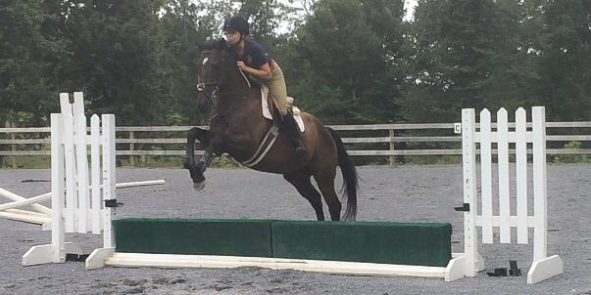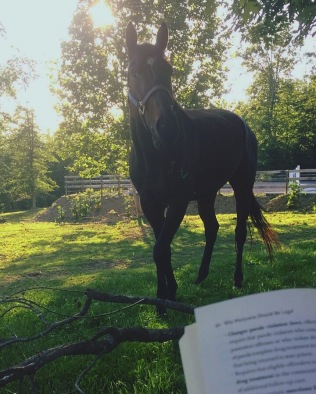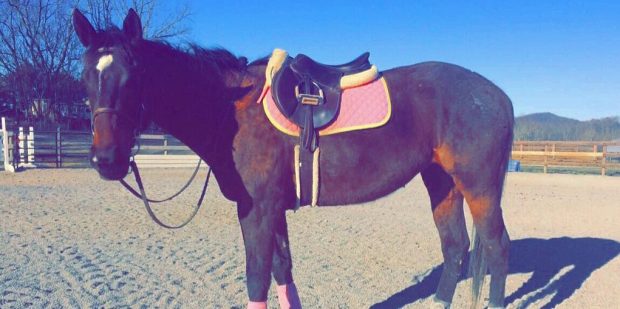Bailey and I were now successfully jumping obstacles and I felt like we needed another challenge.
My trainer had told me about a local horse show that she would be traveling to with a few other students. I decided to sign up too.
It would be Bailey’s first time traveling off the property since she had arrived at Anchor Way Farm over a year ago. I hadn’t competed away from home in at least two years. My nerves were on over drive.

Bailey and I warming up before our classes at Fox Hollow Riding Academy.
I had the same goals as I did for the home show that we had participated in April. I wanted Bailey’s first experience to be rewarding and positive, so we only entered two classes. As I have stated in previous posts, a regular division has three jumping rounds and a flat phase. However, Bailey was not ready to take on any obstacles away from home so we decided to compete in two flat classes of different divisions.
I was ready for Bailey to have a meltdown, bolt, spook or what ever chaos that might ensue. Horses are unpredictable creatures, but I feel this is what draws me to the sport.
Everything is built on a foundation of trust.
We entered the ring and without hesitation Bailey walk, trot, and cantered willingly when I asked. Yet again this ex-race horse amazed me with her level of intelligence and maturity.
Even though we placed next to last in both classes, I left Fox Hollow Riding Academy feeling just as successful as I did when attending the 2015 ETHJA awards banquet. The ribbons and trophies will never matter as much to me as the work that goes into winning them.
Below is a short video of the judge asking for a walk to canter transition and Bailey willingly executing the cue.













